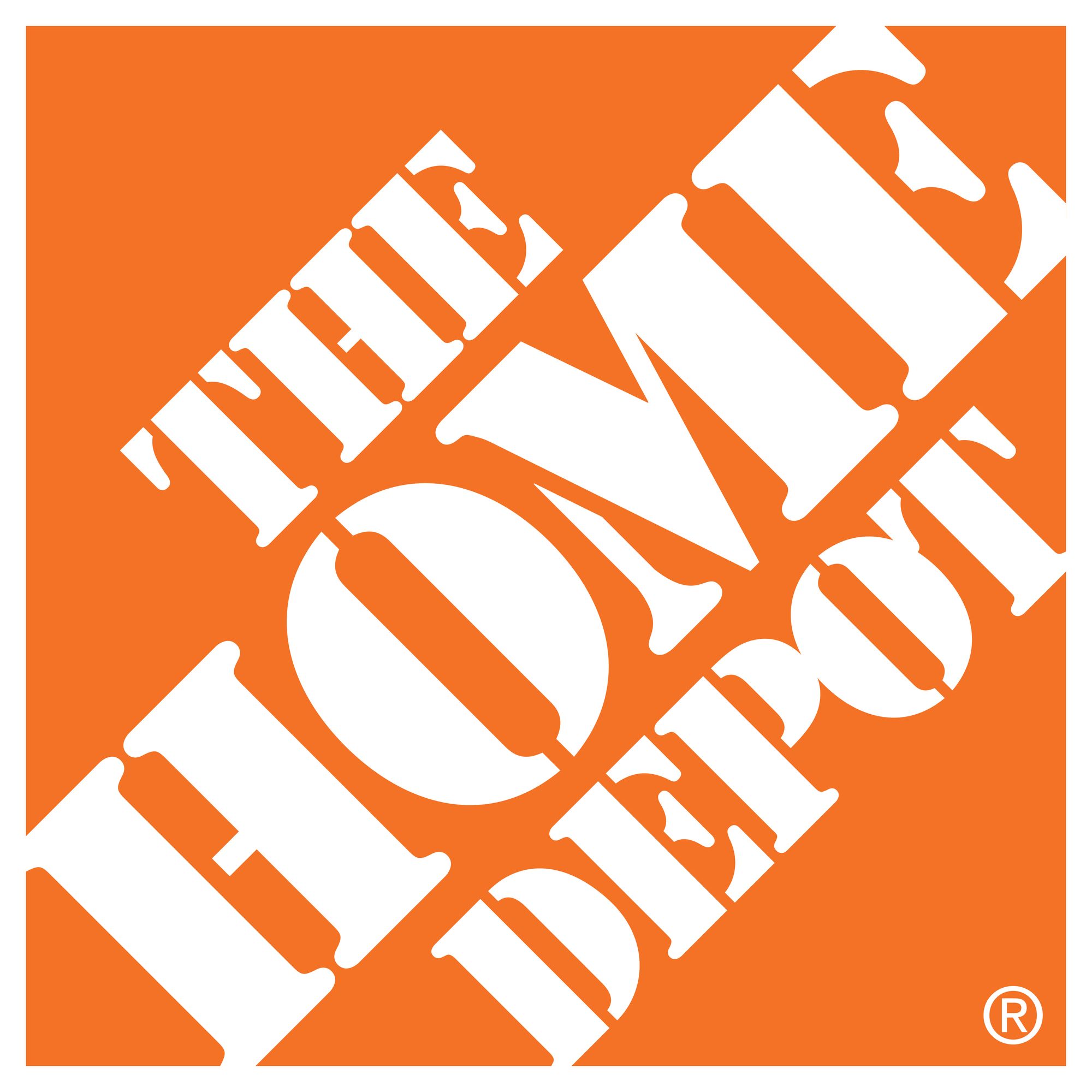The Home Depot is the world’s largest home improvement retailer with sales of $151.2 B in 2021. The company is specialized in selling building materials and home improvement products, it also provides services including home improvement installation services and tool and equipment rental. As of the end of 2021, The Home Depot operated 2,317 stores located throughout the U.S., Canada, and Mexico and counted over 490,000 employees.
- The Home Depot was founded in 1978 by Bernie Marcus and Arthur Blank
- Avid DIYers, Bernie Marcus and Arthur Blank envisioned a superstore that would offer a huge variety of merchandise at great prices and with a highly trained staff
- With help from then investment banker Ken Langone and merchandising guru Pat Farrah, the first two Home Depot stores were in Atlanta in 1979
- The Home Depot went public in 1981 on the NASDAQ raising $4 M

THE HIGHEST LEVEL OF CUSTOMER SERVICE
A highly trained staff has been at the core of the DIY superstore envisioned by Bernie Marcus and Arthur Blank. The Home Depot employees are not only able to sell, but they can help customers with any home repair or improvement. As Marcus and Blank said in their book Built From Scratch: “At the end of the day, we’re in the people business”.
The Home Depot serves two primary customer groups: (i) consumers, including both DIY (Do It Yourself) and DIFM (Do It For Me) customers and (ii) professionals. The company has developed varying approaches to meet their diverse needs.
- (i) Consumers: DIY customers are typically homeowners who purchase products and complete their own projects and installations. DIFM customers are homeowners who rely on professionals to complete their project or installation. The Home Depot offers installation services in a variety of categories which can be purchased in stores and online
- (ii) Professional customers: Include primarily professional renovators or general contractors. In order to better serve professionals, the company has invested $1.2 B since 2018 in its supply chain by building massive buildings known as flatbed distribution centers that can hold and distribute larger orders. In Q4 2020, The Home Depot acquired HD Supply, a national distributor of Maintenance, Repair & Operations (MRO) products to multifamily, hospitality, healthcare, and government housing
About half of total sales come from home professionals according to CFO Richard McPhail, professionals are also more lucrative than DIY customers. To further spur growth, The Home Depot has boosted its focus on professionals as it now wants to win their large, scheduled orders instead of just being the go-to store when scrambling to find a tool.
A FULLY INTERCONNECTED RETAILER
DIYers are increasingly posting on social media about how proud they are of a job well done. The internet has evolved into the DIY consumer's indispensable partner. They look there for instructions, as well as the equipment and supplies they need to finish the job. In this light, The Home Depot understands that a smartphone is now just as necessary in a DIYer's toolkit as a hammer and screwdriver. Professionals also rely heavily on technology.
- In 2017, the company launched a multi-year strategy called One Home Depot with a $11 B investment to “unlock a frictionless interconnected shopping experience, to seamlessly blend the digital and physical worlds.”
- Based on data from April 2021, online home improvement spending in the U.S. was led by Home Depot, with a marketshare of 59%, followed by Lowe's with 25% and Menards with 7%
- In 2021, online sales represented 13.7% of net sales and grew by 9.4% compared to 2020
THE MARKET
By 2025, the home improvement market in the U.S. is expected to be worth more than $620 B, more than twice what it was in 2008. The Canadian home improvement market is expected to be valued at CAD $ 65 B by 2023. The Home Depot is the market leader in Canada with sales of CAD $ 10.4 B in 2020, Lowe's Canada and Home Hardware Stores followed in the second and third place.
- Globally, the home improvement market is worth $800 B and is expected to grow to $1.1 T by 2028 with a CAGR of 4.6% over the forecast period
- Main growth drivers for the forecast period include the rise in interest rates and property costs which is leading to people opting to spend on renovating their home rather than on spending larger amounts on buying a new one
- The rise of the DIY culture and its increasing popularity due to online videos and professional courses is also a contributing factor
A PANDEMIC FUELLED BOOM
Many households found time to engage on DIY and home renovation projects while COVID-19 put a pressure on the event industry, tourism, and social activities. Around a quarter of American households painted or landscaped their interior gardens. The fact that there was "finally time for it" was one of the main justifications for starting these initiatives in 2020.
- The home renovation sector is now stronger than it has been in more than ten years
- Over the past two years, The Home Depot's revenues have increased by more than $40 B as a result. That is nearly equivalent to the company's entire sales growth from 2009 to 2018
LOW HOMEBUILDER SENTIMENT COULD SOFTEN DEMAND
The slowdown in the U.S. housing market doesn't seem to have had a significant impact on spending on home improvements, but economists warn that this strength may not last. The 30-year fixed mortgage's average rate has nearly doubled since the beginning of the year and housing starts have sharply decreased.
- According to Lowe's CEO, low housing starts and high mortgage rates could incentivise homeowners to stay where they are and choose to renovate their current homes, more than half of U.S. homes are over 40 years old
- Over the past decade, increasing property values have made it possible to take out larger home equity loans, which homeowners sometimes use to finance renovations
However, home equity loans have started to decline due to increased interest rates and the cooling property market. By the end of this year or the start of the next, the decline may affect contractors and other professionals in the home improvement industry.
“There’s a bit of a lag effect, [...] We do think this drop off in home equity extraction will eventually show up in the pro spending.” said Piper Sandler analyst Peter Keith.
MANAGEMENT
The Home Depot was founded by Bernie Marcus and Arthur Blank. Marcus led the company as CEO and chairman until retiring in 2002. Blank served as the company's president and CEO, he retired from the company in 2001 as co-chairman. Today the company is led by Ted Decker who serves as CEO and President since March 2022. Richard McPhail serves as CFO and executive vice president.
- Ted Decker is CEO and president of The Home Depot since March 2022, Decker is also a member of the company’s board of directors
- From 2020 to 2022, Decker served as president and COO and was responsible for global store operations, global supply chain, outside sales and service, real estate, as well as merchandising, marketing and online strategy. He joined The Home Depot in 2000 as director of business valuation
- He earned a bachelor’s degree in English from The College of William and Mary and a master’s degree in business administration from Carnegie Mellon University
- Richard McPhail is CFO and executive vice president of The Home Depot
- Richard joined the company in 2005 and has worked in senior roles in strategic planning, financial planning, business development, real estate and international financial management and served as the primary finance partner to all main commercial functions
- McPhail earned bachelor’s degrees in economics and business management from North Carolina State University and a master’s degree in business administration from the Fuqua School of Business at Duke University
- Ann-Marie Campbell is executive vice president of U.S. stores and international operations. Campbell leads over 2,200 stores and 400,000 associates, as well as supply chain, merchandising, sourcing and strategy for Canada and Mexico
- She began her career with The Home Depot in 1985 as a cashier in South Florida. She learned her first lessons in retail from her grandmother in Jamaica, who owned a small furniture store and had a reputation for friendly, top-notch customer service
- Campbell is a graduate of Georgia State University, where she earned a bachelor’s degree in philosophy and a master’s degree in business administration
TAKE A BREATH
So… This is a lot of information. Let’s summarise:
- The Home Depot is the world’s largest home improvement retailer with sales of $151.2 B in 2021
- The Home Depot was founded in 1978 by Bernie Marcus and Arthur Blank
- The company serves two primary customer groups: (i) consumers, including both DIY (Do It Yourself) and DIFM (Do It For Me) customers and (ii) professionals
- To further spur growth, The Home Depot has increased its focus on the lucrative professionals segment
- As part of its multi-year strategy called One Home Depot, the company has grown online sales to 13.7% of net sales in 2021
- The pandemic fuelled boom led to a $40 B sales boost over the past two years, nearly equivalent to the company's entire sales growth from 2009 to 2018
- Interest rates rises may affect contractors and other professionals in the home improvement industry on the short term, which could weight on The Home Depot's sales
- The company is led by Ted Decker who serves as CEO and President since March 2022, Richard McPhail serves as CFO and executive vice president
FINANCIAL CHECK
Total revenues for fiscal 2021 amounted to $ 151.2B, up 14% year-on-year and up 37% compared to fiscal 2019. Net earnings were $16.4 billion (up 27% year-on-year), or $15.53 per diluted share.
- The Home Depot reported sales of $43.8 B for Q2 2022, an increase of $2.7 billion, or 6.5% year-on-year
- Net earnings for for Q2 2022 were $5.2 B, or $5.05 per diluted share, representing an 11.5 % increase in diluted EPS year-on-year
- For the quarter ending July 31, total customer transactions decreased to 467.4 million, from 481.7 million a year ago. Meanwhile, the average ticket size grew 9% to $90 from $82
- Sales per retail square foot grew 5.7% year-on-year
- For the full year of fiscal 2022, The Home Depot expects total sales growth of approximately 3% and operating margin of approximately 15.4%
THE BOTTOM LINE
The Good
- The Home Depot has been a massive pandemic winner and has largely benefitted from tailwinds in the housing market over the last 10 years
- Management has succeeded in the execution of the company's digital transformation to serve tech savvy consumers and professionals
- The company continues to dominate the lucrative professionals segment and is increasing its focus to win the large, scheduled orders from them
The Bad
- High inflation and interest rates could start eating into The Home Depot's revenues and profit margins as demand for home building and renovation lowers and purchasing power drops
- Growth rates in the double digits as seen over the last two years are not sustainable, in line with the full year 2022 guidance, management projects sales to grow only by 3% year-on-year
Disclaimer
Please note that this article does not constitute investment advice in any form. This article is not a research report and is not intended to serve as the basis for any investment decision. All investments involve risk and the past performance of a security or financial product does not guarantee future returns. Investors have to conduct their own research before conducting any transaction. There is always the risk of losing parts or all of your money when you invest in securities or other financial products.
Credits
Photo by Oxana Melis on Unsplash






